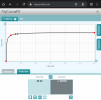Hi guys. I'm a noob here (just created an account), but I've been lurking a ton and always use this site for checking out headphones before auditioning them (to narrow down my choices).
I just have a (probably dumb) question: how do I EQ the Sundara (or any headphones, really) not to conform to any "target" but just to eliminate their "flaws"? For example, the Sundara has a harsh (to me) treble peak and the review measured some bass is lacking. I d like to correct both those points while still retaining the Sundara's "default sound." (if that makes any sense?). For now, I'm using oratory's presets (they're honestly amazing) but they're obviously tuned to Harman. I'd like to retain the HP's natural sound but just eliminating the more major flaws.
Unfortunately, I only have EQ APO and I don't have any measurement rigs. Is that still possible? I also don't know if I can trust my ears since I'm not confident I know enough to do that. How do I go about doing this? I appreciate your inputs.
Edit: basically, instead of relying solely on what sounds good to me, I'd like to be able to eliminate the parts that are considered flaws while still retaining the "stock" sound. I'm scared if I do them by ear I'd EQ them too little or I'd EQ them too much that they'd sound a but far from their stock sound.
I just have a (probably dumb) question: how do I EQ the Sundara (or any headphones, really) not to conform to any "target" but just to eliminate their "flaws"? For example, the Sundara has a harsh (to me) treble peak and the review measured some bass is lacking. I d like to correct both those points while still retaining the Sundara's "default sound." (if that makes any sense?). For now, I'm using oratory's presets (they're honestly amazing) but they're obviously tuned to Harman. I'd like to retain the HP's natural sound but just eliminating the more major flaws.
Unfortunately, I only have EQ APO and I don't have any measurement rigs. Is that still possible? I also don't know if I can trust my ears since I'm not confident I know enough to do that. How do I go about doing this? I appreciate your inputs.
Edit: basically, instead of relying solely on what sounds good to me, I'd like to be able to eliminate the parts that are considered flaws while still retaining the "stock" sound. I'm scared if I do them by ear I'd EQ them too little or I'd EQ them too much that they'd sound a but far from their stock sound.
Last edited:

